By John D. Tulenko, Jackie Mader and Lillian Mongeau, The Hechinger Report
We know preschool makes a big difference for kids and that its effects can last a lifetime. But to have that kind of impact, early care has to be high quality.
Faced with constraints on price, availability and location, parents are often unclear about what actually matters when evaluating a potential preschool. No matter what educational philosophy or model an early childhood classroom uses, these five elements are the essentials to look for when choosing a preschool.
1. Classroom atmosphere and design
A classroom that’s conducive to learning should feel joyful and friendly and be designed around clear focus areas, called centers, that offer a variety of activities.
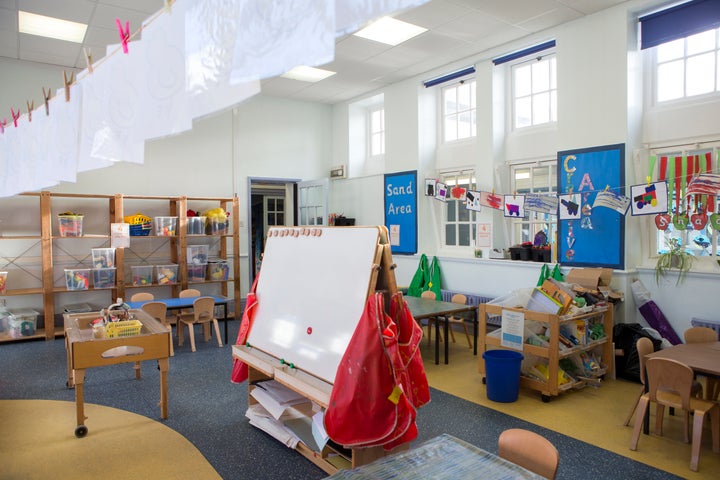
DGLimages via Getty Images
What you can see:
– Building toys
– Dress-up clothes and props
– Art supplies
– Unique child art on the walls
– Age-appropriate learning materials (So look for a number line, but not a multiplication chart, picture books, but not chapter books, etc.)
– Low shelves with accessible toys
– Child-sized tables and chairs
– Clearly delineated areas (You might see a dress-up area, an artist’s station or a mini-library, for example.)
What you can ask:
– How much time is spent in group activities? (Hint: Should be about half the day or less.)
– How much time is spent in free play at centers?
– Do kids decide which centers they will use, or do they cycle through all of them?
2. Teachers
Teachers should guide academic growth, model classroom behavior, and offer children tools for dealing with strong feelings.
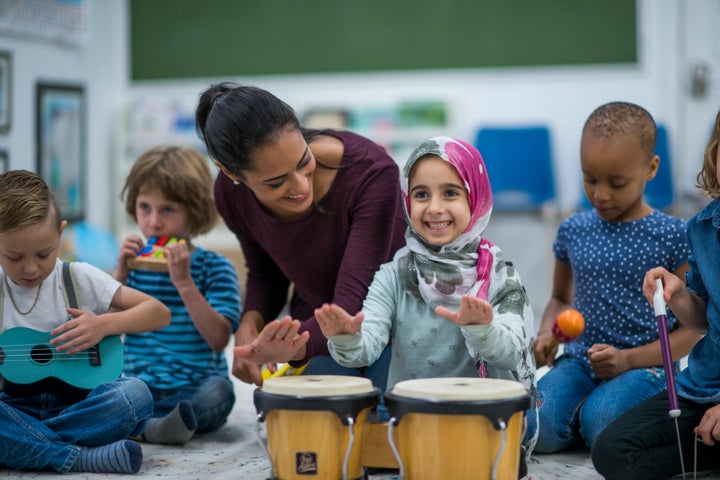
FatCamera via Getty Images
What you can see:
– Teachers crouched at eye level talking to kids
– Teachers constantly observing children as they work and play
– Teachers asking open-ended questions
– Teachers repeating students’ feelings back to them (You might hear: “You’re mad. It’s hard to feel mad.”)
– Teachers prompting students to resolve disputes
– Children looking engaged
– Children offering spontaneous gestures of endearment to teachers (Look for kids reaching for teachers’ hands, giving them a quick hug, etc. Quick physical contact is one way young children express their comfort with adults.)
What you can ask:
– What’s your teaching philosophy? (A wide range of philosophies are effective. What’s most important is that teachers can articulate their approach.)
– What’s your training and how long have you been teaching?
– What do you like about teaching preschool?
– How often do teachers leave this school?
– What can parents do to support what you are doing in class?
3. Discipline and Social-Emotional Development
Preschools should help children understand their feelings and interact with their peers.
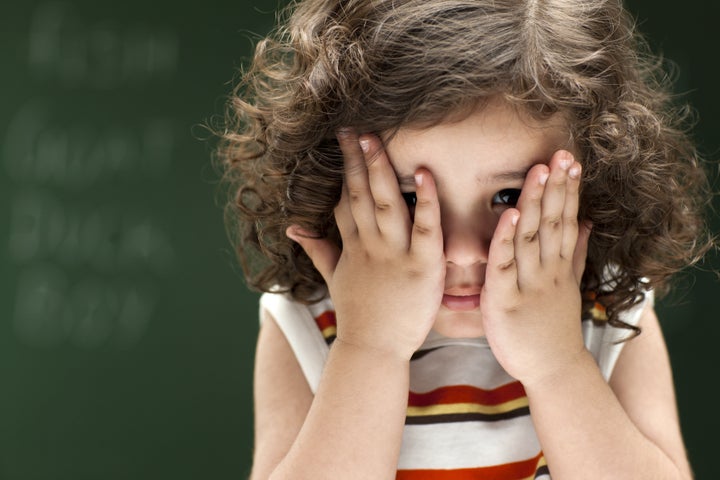
ImagesBazaar via Getty Images
What you can see:
– Charts and pictures on the walls to help kids identify feelings
– A quiet, calming spot in the classroom where upset children can relax
– Minimal use of exclusionary tactics for punishment (Short time-outs can be helpful, but they should be no longer than 3 to 5 minutes and should be framed as a chance for children to calm down and regain self-control, not as a punishment. Children should not be exiled form the classroom or kept confined in a separate area from their classmates.)
– Corporal punishment is never used
– Teachers deal with misbehavior without raising their voices.
What you can ask:
– Do you have a plan for teaching children to deal with their feelings?
– What is your plan for when children bite or hit each other? (Hint: Schools should be willing to work with families to figure out what’s going on and help work out a plan to teach children to self-regulate.)
– Do you ever suspend or expel children? (Ideally, the answer is “no,” although teachers should be willing to discuss alternative or additional opportunities available for children with emotional, mental or physical problems that affect their ability to adjust to a classroom.)
4. Academics
Children should learn fundamental academic skills in reading, math, science and social studies through discovery and creative activities.
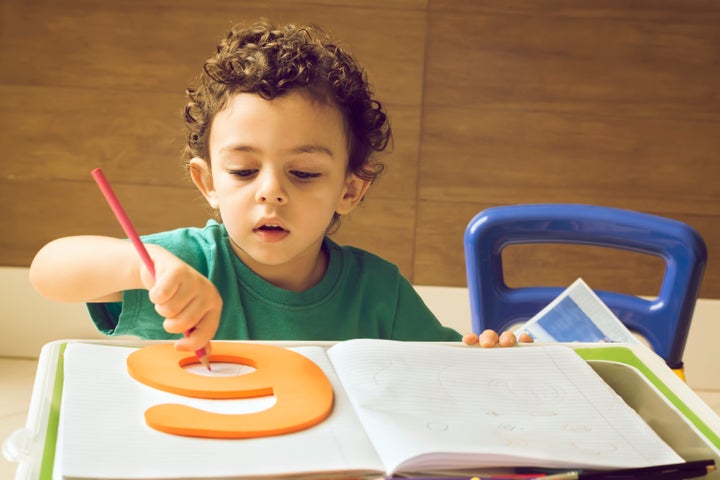
Giselleflissak via Getty Images
What you can see:
– Children creating and explaining patterns
– Children telling a story while the teacher writes it down and the child illustrates it
– Children playing with building materials (such as blocks and train sets)
– Children playing with puzzles and games that require counting or an understanding of more and less (such as a simple version of Chutes and Ladders)
– “Artifacts” of authentic learning, such a child art, science projects and other evidence of child-directed learning
– Teachers prompting students to explore an idea further (You might hear: “You’ve built some tall towers, but they keep falling down. What could you do differently to make them stay up?”)
– Teachers prompting students to predict what they think will happen next in a story, a math puzzle, or a science experiment (You might hear: “We know Clifford, the big red dog, loves his friend. Now that his friend is stuck in a tree, what do you think Clifford will do?”)
– Minimal use of rote learning (Children singing songs they’ve learned by heart or practicing counting to 20 — as long as their whole day doesn’t consist of parroting back memorized answers.)
What you can ask:
– What is the curriculum you use, and is it based on educational research?
– What are the academic goals for this year? (Hint: They should tell you about their plans for math instruction and other subjects, not just literacy. Listen for phrases like “activity-based” and “hands-on” when they tell you about their plans.)
– How do you track what my child is learning? How do you tell if my child is learning?
– How will you keep me informed about whether my child is on track?
5. Safety
Students should not be at undue physical risk while at preschool.
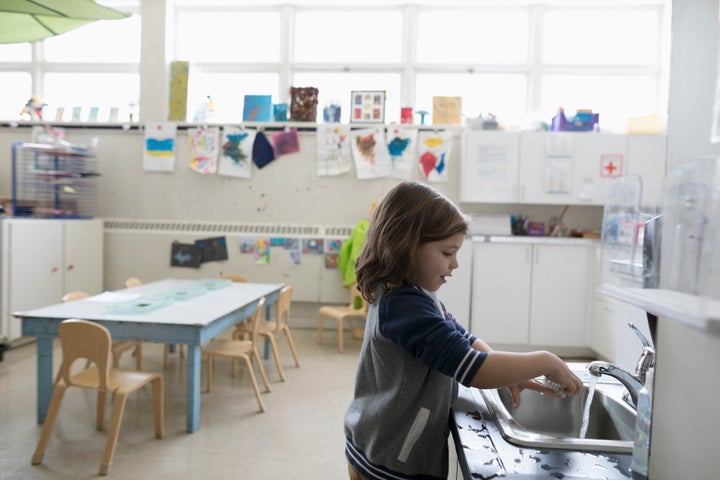
Hero Images via Getty Images
What you can see:
– Chemicals stored in closed cabinets, cords tucked away out of reach
– No open bodies of water (such as a kiddie pool or a filled tub)
– Tall furniture secured to walls
– A process for entry (Look to see if just anyone could walk in and if a child could easily walk out. If the entry system is unclear, ask staff about it.)
– Basic standards of cleanliness are met
– Fire safety certifications be up to date and displayed
What you can ask:
– Are emergency systems in place? What would you do if my child is hurt?
– What happens if my child needs medicine?
– Are background checks on staff up to date?
– Can I see your latest state inspection report? (You may also be able to look up inspection reports in a public state or city database online.)
This story about high-quality preschool was produced by The Hechinger Report, a nonprofit, independent news organization focused on inequality and innovation in education. Sign up for Hechinger’s newsletter.
